Mechanical Engineering
Fuel for thought: Improving combustion for a cleaner future
KAUST’s Clean Combustion Research Center aims to develop technologies for future fuel formulations, more efficient engines, and new methods for power generation.
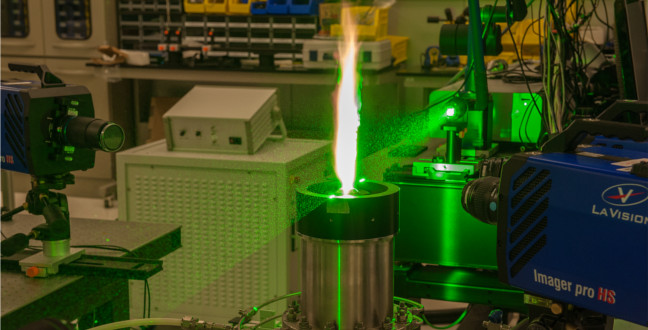
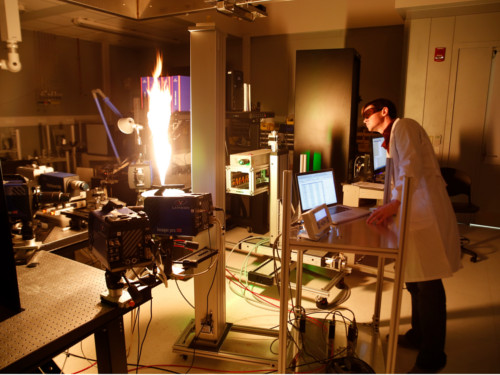
PhD student, Wesley Boyette, uses a four-camera system to examine a turbulent sooting flame, which is important in gas turbines.
© Tunde Gaspar/KAUST
With the effect of climate change a major global challenge for householders, governments and industry, the drive to find cleaner, more efficient fuels and improve supporting technologies has never had stronger impetus. The Clean Combustion Research Center (CCRC) at KAUST draws on expertise from both academic and industrial sources to lead the way in new combustion technology design.
“The CCRC at KAUST is unique for two key reasons,” says Aamir Farooq, faculty member at CCRC. “Firstly, the international team here provides us with a wide-ranging and diverse knowledge base. Secondly, we have access to many state-of-the-art facilities and technologies, such as high performance supercomputers and laboratories where we can simulate many different real-world combustion processes.”
Inside the laboratories of the CCRC, researchers are exploring a wide variety of combustion-related fields. At the crux of many projects are dynamic collaborations between CCRC and other KAUST centers, as well as with industry. Among its broad quest for discovery CCRC takes on inquiry-driven and application-driven research into future engines, chemical kinetics in fuels, computational fluid dynamics, and gas turbines for power generation, to name a few.
“The CCRC is strong in exploring various combustion processes, including fuel oxidation, pollutant formation, and flame stability, in idealized conditions,” explains Farooq. “Measuring these processes in idealized environments allows us to validate predictive tools. These tools help us model combustion processes in realistic environments such as internal combustion engines.”
One example of simulation-based fuel design is the ‘Fuel Combustion for Next Generation Engines’ program (FUELCOM), a collaborative project between CCRC and Saudi Aramco, Saudi Arabia’s state-owned oil company. Fuels used today will be unsuitable for the engines of the future; pollution mitigation and a drive for higher efficiency will demand fuel combustion in increasingly extreme conditions.
The FUELCOM program aims to develop new hydrocarbon-based fuels which can withstand these demands. For example, low temperature combustion engines would require fuels that produce low emissions and have improved ignition. Investigations into using low grade, low cost fuel such as naphtha (volatile liquid hydrocarbon fuel) and low energy, viscous fuels are also underway.
William Roberts, director of the CCRC, is working on a project investigating heavy fuel oil combustion for power generation, in collaboration with French multinational company Alstom and the Saudi Electric Company. Over the next five years, the researchers aim to resolve pollution and particulate issues related to the burning of heavy fuel oil. CCRC is designing new burners and plasma sources which can be used in on-site reforming to convert heavy fuel oils into higher quality, cleaner fuels for use in industrial boilers and furnaces.
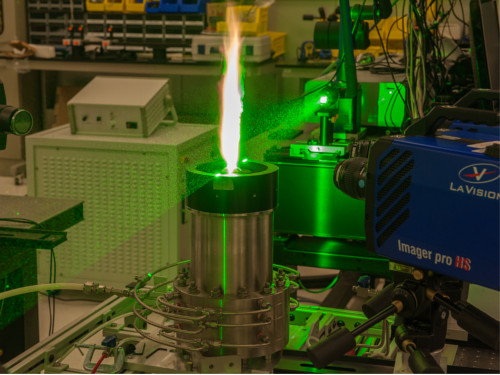
A green laser and camera system are used to do scattering measurements in a turbulent sooting flame.
© Tunde Gaspar/KAUST
Roberts and his team are also working on a new thermodynamic cycle capable of dramatically improving the overall efficiency of gas turbines. Large frame gas turbines are currently the main electricity generation method in Saudi Arabia. Improving their efficiency could significantly reduce the cost of electricity and preserve crude oil for export. Their work on turbines can even be used in future airplane engines.
Future research projects will be conducted under three main categories: extreme combustion, future fuels and new combustion concepts.
“Extreme combustion is a long-term goal which will establish a world-leading facility on combustion in extreme conditions,” explains Farooq. “We will design and build new combustion chambers and high-pressure environments in order to test diagnostic techniques based on ultra-fast lasers and ballistic imaging, for example. These techniques can be used to monitor fuel spray dispersion and evaporation dynamics.”
Further research will take place into fuels blended from conventional and bio sources, renewable energy sources, and improving existing low-grade fuels. Research into computational modeling of combustion scenarios will also continue. The use of plasmas, electric and magnetic fields to enhance combustion is a priority, as well as investigating thermodynamics for gas turbines and nanotechnology for flame-based material synthesis.
In line with the Center’s mission, external collaborations alongside interdisciplinary projects within KAUST will form the backbone to future CCRC research, continuing its unique and valuable contribution to research and development of cleaner, more efficient fuels and engines for the future. Furthermore, the Center is working closely with the Industry Engagement Office in Economic and Technology Development at KAUST to expand the Center’s offerings to leading global industries.
References
- | article
You might also like

Mechanical Engineering
Tiny sensor could transform head injury detection
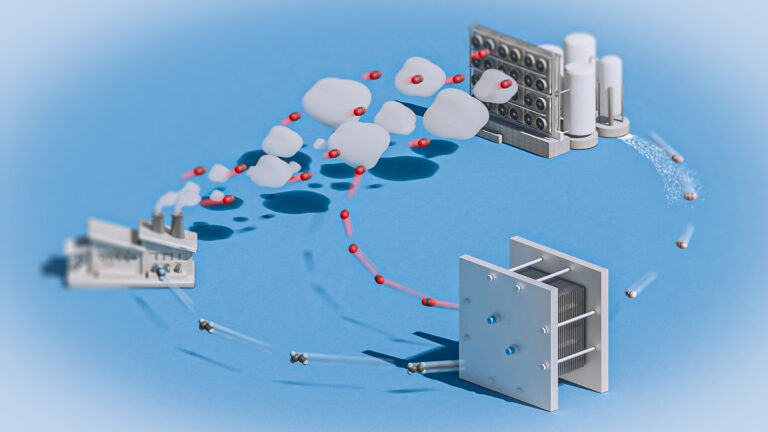
Mechanical Engineering
Electrocatalytic CO2 upcycling excels under pressure
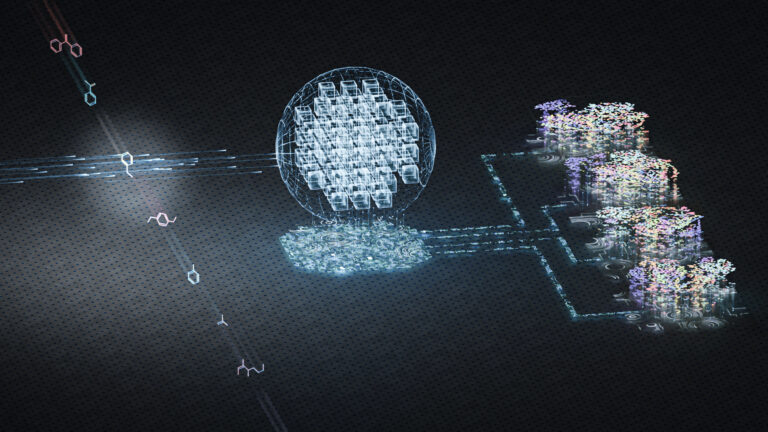
Chemical Engineering
Rethinking machine learning for frontier science
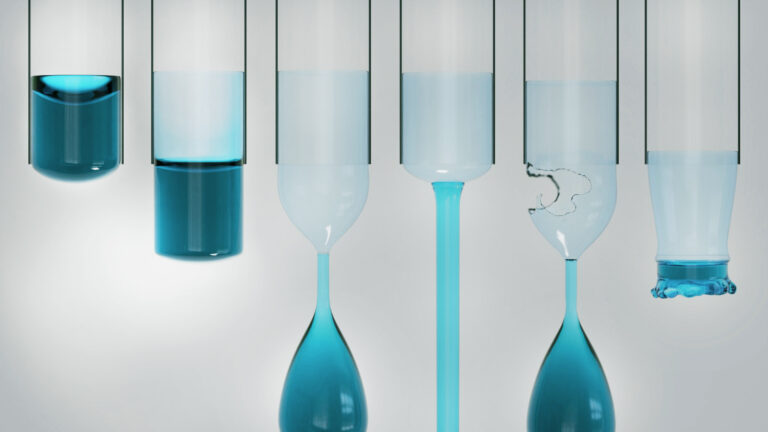
Mechanical Engineering
Falling water forms beautiful fluted films
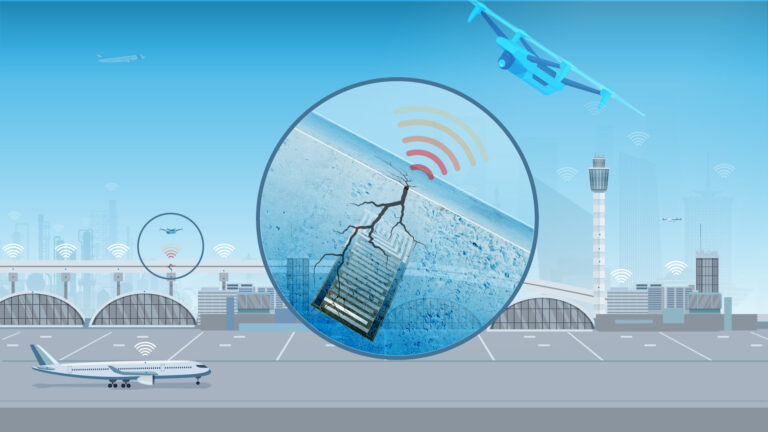
Mechanical Engineering
Innovative strain sensor design enables extreme sensitivity
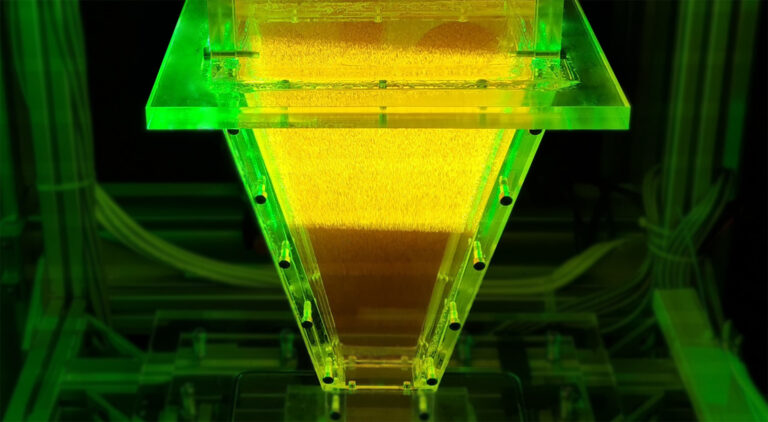
Mechanical Engineering
Turbulent flow shows surprise patterns that could help boost efficiency

Mechanical Engineering
Machine learning model identifies gas molecules

Mechanical Engineering



